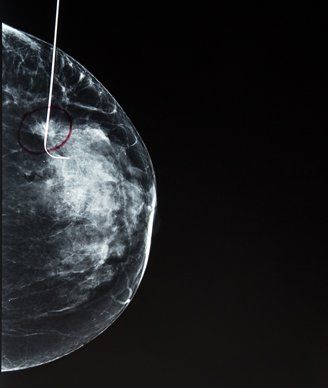Adjuvant Chemo Would Benefit Some Patients With Small Breast Tumors
Nearly one quarter of breast cancer patients with small, node-negative tumors have high-risk genomic characteristics and would likely benefit from chemotherapy, according to results of a new study presented at the 2017 ESMO Congress.
Image © David Litman / shutterstock.com

Nearly one quarter of breast cancer patients with small, node-negative tumors have high-risk genomic characteristics and would likely benefit from chemotherapy, according to results of a new study (abstract 150O_PR).
“Our results challenge the assumption that all small tumors are less serious and do not need adjuvant chemotherapy,” said Konstantinos Tryfonidis, MD, of the European Organisation for Research and Treatment of Cancer in Brussels. He presented results of a subgroup analysis of the MINDACT trial at the European Society for Medical Oncology (ESMO) 2017 Congress, held September 8–11 in Madrid.
The study included 826 patients (out of 6,693 in MINDACT) with small (< 1 cm), node-negative tumors (pT1abN0). All women had their genomic risk assessed using the MammaPrint assay, and their clinical risk assessed using a modified version of Adjuvant! Online.
Almost all patients were clinical low risk (99.3%), and most were both clinical and genomic low risk (75.5%). A total of 196 women (23.7%) were clinical low risk but genomic high risk (5 others were clinical high risk and genomic low risk).
Those deemed low risk by both assessments did not receive chemotherapy, while the few who were high risk by both were advised to receive chemotherapy. The discordant patients were randomized to either receive or not receive adjuvant chemotherapy.
The results suggest that these patients, though considered low risk in general, did derive benefit from chemotherapy. The 5-year distant metastasis–free survival rate was 97.3% in those who received chemotherapy, and 91.4% in those who did not. The 5-year overall survival rate was 98.5% with chemotherapy, and 95.8% without it.
Evandro de Azambuja, MD, PhD, of the Jules Bordet Institute in Brussels, commented on the study, and said that this makes it clear that tumor biology, and not just size, is important for breast cancer patients. “Small, node-negative tumors can be very aggressive, even if they are classified as clinical low risk,” he said. “Tumor biology needs to be taken into account when deciding adjuvant treatments in this patient population.”